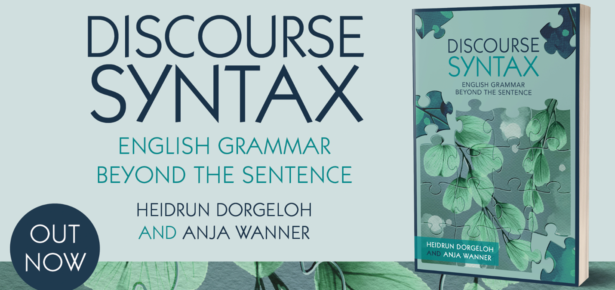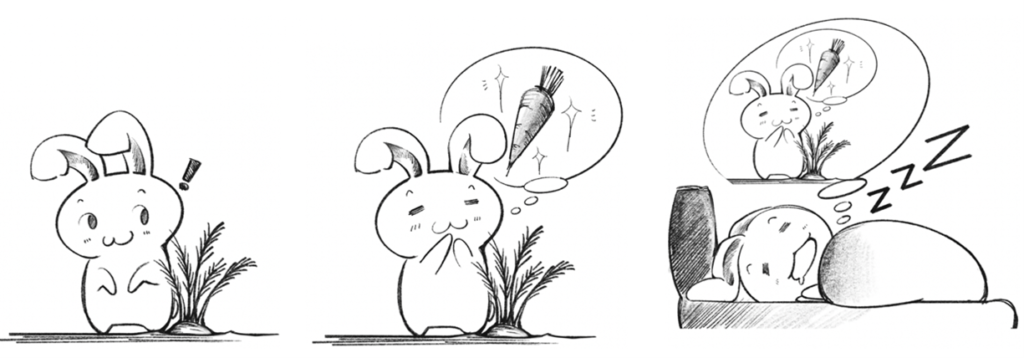
Why a textbook?

For both of us, Discourse Syntax is our first textbook. We have both published critical monographs, research articles, and chapters for edited volumes, but, after two decades in the linguistics classroom, we felt it was time to harness our experience as linguists and teachers of linguistics and bring the two together in a book that addresses a field that we both contribute to (and regularly teach) for which not many textbooks exist. We are lucky to work at institutions (Heinrich-Heine-University Düsseldorf and the University of Wisconsin-Madison) that recognize the importance of connecting teaching and research. Still, setting considerable time apart for a project whose main goal is not to produce new knowledge in the traditional sense is a decision one doesn’t make light-heartedly. We could not have done such a project while we were junior scholars. And we would not have done it at all if we hadn’t felt that there was a textbook gap in this area.
What exactly is Discourse Syntax?
We use the term to refer to two things: syntax IN discourse, i.e. syntactic phenomena that can only be explained by taking into account the surrounding discourse (like the use of inversion, topicalization, or the choice between I called up John and I called John up), and the syntax OF discourse, i.e. syntactic phenomena that create discourse (like the use of ellipsis, pronouns, or discourse markers). Both may be touched on in introductory linguistics or syntax classes, but there is usually only room to mention them, not fully discuss them. Since we don’t speak in isolated sentences, it is really important to understand how grammar works beyond the sentence. Besides the study of discourse, we know that such topics are also likely to be covered in courses on grammar or language in use, syntax and pragmatics, variationist syntax, register studies, or language for specific purposes, and we outlined the contents of the book also with courses like these in mind.
What is different about writing a textbook?

Writing for a student audience is very different from writing for an audience of fellow linguists. The tone is different, the perspective is different, the material is different. We wrote this book with students and instructors in mind, providing learning goals and assessment opportunities for each chapter (and model answers that instructors can share as they see fit). We used recurring visual elements to structure the material – study icons, fun illustrations, toolboxes, all specifically designed for this textbook. You want to draw your readers in.

We decided to introduce in some detail at least two research studies for each phenomenon we present in the book — you can imagine the discussions about how to decide which studies to pick. We decided to give room to discussing research methodology and the shortcomings of some of the methodologies chosen. We included a lot of charts and diagrams, all specifically created or re-created for the book, and talk quite a bit about data visualization. We hope that all these tools will empower students to design their own research projects, even if they’re small in scope or replications of existing studies.
Writing for a student audience also meant that we tried to use real-life examples from a wide range of sources – all our examples come from corpora and they cover a wide range of registers, including digital registers. The constructions we discuss in detail include things like singular they, hashtags, and the ‘new because.’ Students will get to know these as cases of innovation or syntactic and textual variation, and they will learn about them from the perspective of doing empirical research.
Lastly, a note on co-authorship

We love working together as a team. We have co-organized workshops, co-authored research articles, co-edited a book, and now we have co-written a textbook. Over the years, we have developed a solid rhythm of writing and reviewing each other’s work. With a co-author, there is always a first highly engaged audience for everything one writes, which is great. However, with the many moving pieces that a textbook has (chapters, charts, illustrations, exercises, an index, a glossary, model answers), many more than a research article, we would not recommend picking a textbook as the first major co-authored project two people should undertake.
We are truly excited to share the product of our collaboration and hope students and instructors will enjoy discovering the field of Discourse Syntax!
Latest Comments
Have your say!